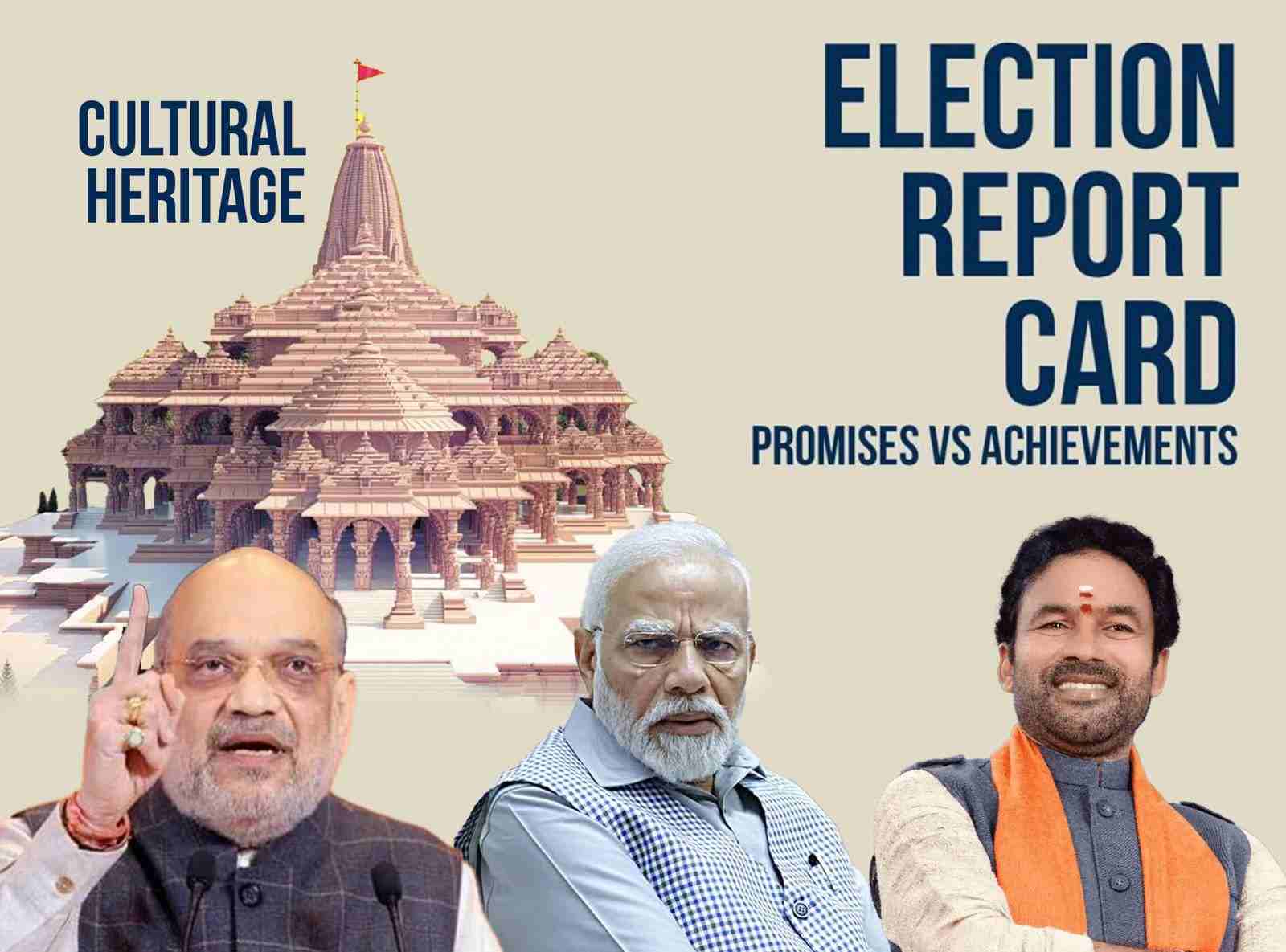Election is a very important tool in democracy. It is through elections that citizens of a nation choose their representatives, select their leaders. Political leaders represent different political parties which work for various goals. As the Lok Sabha Elections 2024 begin, how to decide which political party you should cast your vote for? How to know how much work the party in power has done as against the tall claims that were made right before the previous elections?
The CSR Journal, which is known for its unbiased and fearless journalism delves into promises made versus task completed by the Bharatiya Janata Party (BJP), which is incumbent at the Centre under the leadership of Prime Minister Narendra Modi.
Following are certain promises made under the BJP’s manifesto ahead of the Lok Sabha Elections 2019. How much of the promises have been achieved in the past 5 years? Were the decisions made by the government beneficial for its people? Are citizens happy with what the government has to offer? What is the opposition saying? The CSR Journal takes a look.
BJP Manifesto – Lok Sabha 2019
Promises made under: Cultural Heritage
Ram Mandir
Conserving Bharatiya Faith and Culture
Conserving Bharatiya Linguistic Culture
Namami Gange: A matter of pride
Sabarimala
Promoting Yoga Globally
Bharatiya Cultural Festival
Dharohar Darshan
Uniform Civil Code
Ram Mandir: Politics and religion
Prime Minister Narendra Modi presided over ‘pran pratishtha’ or consecration of the idol of Lord Ram at the Ram Mandir in Uttar Pradesh’s Ayodhya on 22nd January this year. The temple has been built on the land where the Babri Masjid stood before its demolition on 6th December 1992.
Construction of the Ram Mandir was a part of the Bharatiya Janata Party’s (BJP) manifesto published ahead of the Lok Sabha Elections 2019. In the manifesto, it is written, “We reiterate our stand on Ram Mandir. We will explore all possibilities within the framework of the constitution and all necessary efforts to facilitate the expeditious construction of the Ram Temple in Ayodhya.”
Also, with the Ram Mandir, the government is trying to promote Ayodhya as a major hub for religious tourism for tourists and pilgrims from across the world.

However, more than being a symbol of religious devotion, the Ram Mandir has turned out to be a huge political issue in India in the present day. First of all, invitation to attend the Ram Mandir inauguration in Ayodhya in January was turned down by major political parties in the opposition such as Congress, Aam Aadmi Party (AAP), Samajwadi Party (SP), Trinamool Congress, Communist Party of India (Marxist) or CPI(M), Nationalist Congress Party (NCP) citing their own reasons, as a lot of these leaders felt that this is “politicisation of religious belief.”
Earlier this week, Prime Minister Narendra Modi accused the opposition of using Ram temple as a ‘political weapon’. In an interview to news agency ANI, the PM questioned the Congress Party’s decision to not attend the consecration ceremony of the Ram Mandir in Ayodhya calling it “a weapon in their hands, a weapon for vote bank politics”. He also accused Congress and other opposition parties of trying to delay the judgement of the court regarding the temple.
Meanwhile, CPI(M) General Secretary Sitaram Yechury has written to Chief Election Commissioner (CEC) Rajiv Kumar, requesting for swift action against PM Modi for “incitement of religious sentiment against a political opponent”. The step has been taken after the PM branded opposition parties as “opponents of Ram Mandir” during his election campaigns.
Sitaram Yechury shared his letter to the CEC on social media this week, urging the Election Commission of India to immediately intervene in the matter and take steps to curb the violations of the Model Code of Conduct and apply the law of the land impartially, regardless of the stature of the person involved. “The use of the Ram temple or the deity of Lord Ram to mobilise support for the BJP or to incite passions against opposition parties is a gross violation of the Model Code of Conduct,” Yechury said, referring to Modi’s speeches in Rajasthan’s Ajmer, Bihar’s Nawada and Uttar Pradesh’s Pilibhit earlier this month.
The CPI(M) leader further said that PM Modi’s remarks saying the “specific opposition parties” are ‘opponent of Ram Temple’, ‘insulting Lord Ram’ and ‘will not allow Ram Navami celebrations’ were ‘highly unfortunate’ and that such ‘divisive and baseless speeches’ were delivered to ‘incite passion’ against them. “It is highly unfortunate that such divisive and baseless speeches are being made by a person holding the high office of Prime Minister and who is the top-most leader of the ruling party,” the CPI(M) senior leader said.
BJP’s promise of conserving Indian faith and culture
The second biggest challenge the Narendra Modi Government is facing today after inflation is perhaps the allegation of communal polarization. In a recent interview with UK-based Financial Times, Prime Minister Narendra Modi said that Indian society has “no feeling of discrimination towards any religious minority” when asked about the future of Muslim minorities in the country.
While the Constitution of India terms the nation as a “Sovereign Socialist Secular Democratic Republic”, the consecration of Ram Mandir by PM Modi earlier this year has reportedly failed to convey a message about the government’s secular approach to many people. Taking a closer look into the Ram Mandir inauguration, visuals show a Muslim cleric walking inside the temple along with other dignitaries on the day of the consecration. Unfortunately, Imam Umer Ahmed Ilyasi, who has been the chief imam of the All India Imam Organisation (AIIO) since 2009 has revealed that he is the target of a “fatwa” for attending the event in Ayodhya!
While the BJP Manifesto ahead of the Lok Sabha Elections 2019 mentions ‘Conserving Bharatiya Faith and Culture’ as one of their focus areas, the recently implemented CAA is being criticised for being anti-Muslim in nature. This is because India equally recognises Islam as it recognises Hinduism, Sikhism, Buddhism, Jainism, Zoroastrianism and Christianity, the religions favoured by the Citizenship Amendment Act (CAA) while granting citizenship to migrants from neighbouring countries.
Talking about conserving India’s culture, there is no denying the fact that the Narendra Modi government has taken initiatives to preserve and promote India’s cultural heritage. These include policies for restoration of cultural sites and monuments, promoting traditional arts and crafts, the celebration of cultural festivals and events and promoting the same on the global stage.
BJP Government’s initiatives at preserving heritage
The PRASAD scheme (Pilgrimage Rejuvenation and Spiritual Augmentation Drive) aims to develop and beautify pilgrimage destinations across India by improving the infrastructure, facilities, and services at selected sites. As of May 2023, a total number of 45 projects at a cost of Rs 1584.42 crore covering pilgrimage sites across the country have been approved under PRASAD scheme by the Government.
Launched in January 2015, National Heritage City Development and Augmentation Yojana (HRIDAY) was a developmental scheme under the Ministry of Housing and Urban Affairs, Government of India to bring urban planning, economic growth and heritage conservation together. The scheme was implemented in 12 cities namely Ajmer (Rajasthan), Amaravati (Andhra Pradesh), Amritsar (Punjab), Badami (Karnataka), Dwarka (Gujarat), Gaya (Bihar), Kancheepuram and Velankanni (Tamil Nadu), Mathuraand Varanasi (Uttar Pradesh), Puri (Odisha), and Warangal (Telangana).

HRIDAY scheme was completed in 2019 but after the conservation of buildings, the government has allegedly not opened several renovated buildings for tourists.
Initiatives taken towards cultural preservation include infrastructural upgradation of historical places like Uttar Pradesh’s Varanasi– the Kashi Vishwanath Corridor project, the Mahakal Lok Corridor in Ujjain, Madhya Pradesh, the Maa Kamakhya Corridor in Guwahati, the 825 km long Chardham Road project, restoration of Badrinath and Kedarnath Dham after damage caused by the 2013 floods and the restoration of Somnath temple in Gujarat. These initiatives underscore the Narendra Modi government’s commitment towards making India culturally vibrant.
Prime Minister Narendra Modi launched the ‘PM Vishwakarma Scheme’ in September 2023 on the occasion of Vishwakarma Jayanti, in New Delhi. The scheme is meant to benefit traditional artisans and craftspeople. The scheme designed to benefit Indian artisans engaged in eighteen identified traditional trades, would be fully funded by the Union Government with an outlay of Rs. 13,000 crores. These include occupations like blacksmithing, goldsmithing, pottery, carpentry, sculpting etc. The objectives of the scheme are preservation and promotion of the rich cultural heritage of traditional crafts, and, supporting artisans.
Yuge Yugeen Bharat National Museum
In July 2023, PM Modi announced the world’s largest museum named ‘Yuge Yugeen Bharat National Museum’ which will be built in Delhi. The museum will be located on Kartavya Path (formerly known as “Rajyapath”) and will replace the existing National Museum. The proposed three-storied museum will cover 1.17 lakh sqm of land and will have 950 rooms. The museum will showcase Indian history and culture spanning over 5000 years with periods from ancient Indian knowledge, ancient to medieval, medieval, medieval to transition phase, modern India, colonial rule, the freedom struggle and the 100 years from 1947 onwards. India’s ancient town planning systems, the Vedas, Upanishads, ancient medical knowledge, etc. Mauryan to Gupta Empires, Vijayanagara Empire, Mughal Empire, and the rule of several other dynasties will be featured.
BJP’s promise of conserving Bharatiya Linguistic Culture
The Central Government in January this year issued an order instructing all schools and higher education institutions to provide study material for every course in Indian languages digitally within the next three years. With an aim to provide students with the opportunity to study in their own language, study material for all courses under school and higher education shall be made available digitally in Indian languages, as per the Ministry of Education. This is a step towards the government’s efforts to promote education in Indian languages in line with the National Education Policy (NEP) 2020, which focuses on developing high-quality higher education institutions both public and private that have medium of instruction in local/Indian languages or bilingually.

The NEP 2020 envisages the promotion of Indian languages through regular use, preparation of pedagogical materials, training of teachers, adoption of mother tongues as medium of instruction, innovative methods, judicious use of technology and development of positive attitude towards all languages and their remarkable unity.
The NEP emphasises the importance of multilingualism in education. It recognises the cognitive benefits of being proficient in multiple languages and aims to promote proficiency in regional languages alongside the national languages. The policy envisions a flexible approach to language learning, allowing students to learn in their mother tongue or regional language alongside the national languages and English. NEP recognises the significance of indigenous languages in preserving cultural heritage and fostering a sense of identity among indigenous communities.
Using mother tongues as a medium of instruction promotes inclusivity and equity in education. In a vast and diverse country like India, linguistic diversity often intersects with socioeconomic disparities, creating barriers to educational access. By prioritising mother tongue-based education, the NEP aims to level the playing field, ensuring that every child, regardless of linguistic background or social status, has equal opportunities to excel academically.
Namami Gange Programme /National Mission for Clean Ganga
The Ministry of Jal Shakti’s Namami Gange Programme was launched in June 2014 for a period up to 31st March, 2021 to rejuvenate River Ganga and its tributaries. The programme was subsequently extended up to 31st March, 2026. A total of Rs. 16,011.65 crore was released by the Government of India to the National Mission for Clean Ganga (NMCG), from Financial Year 2014-15 till 31st October 2023. National Mission for Clean Ganga have released/disbursed Rs. 15,015.26 crore to various agencies during the said period, for implementation of projects under the Programme.
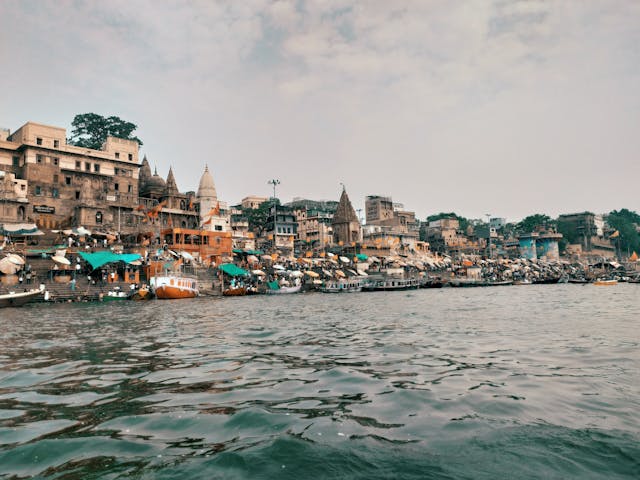
As on February 2024, a total 457 number of projects (including sewage infrastructure) have been sanctioned at an estimated cost of Rs 38,438.05 crore, out of which a total of 280 projects have been completed and made operational. A total 198 number of sewerage infrastructure projects have been taken up with a cost of Rs 31,575.84 crore for creation & rehabilitation of 6,208.12 Million Litres per Day (MLD) of Sewage Treatment Plant (STP) capacity. Out of these, 111 sewerage projects have been completed resulting in the creation & rehabilitation of 2,844.00 MLD of sewage treatment capacity, according to information shared by Minister of State for Jal Shakti Bishweswar Tudu in Rajya Sabha in February this year.
According to the Central Pollution Control Board of India, around Rs 20,000 crore was spent on cleaning the Ganga between 1986 and 2014. Since 2014, another Rs 13,000 crore was allocated and had been spent by October 2022. The government has also changed its policies and adopting a technical approach to cleaning the river.
The Director General of the National Mission for Clean Ganga (NMCG), G Asok Kumar said in an interview in August last year that the Namami Gange initiative, aimed at restoring the Ganges river, has entailed a substantial financial commitment of $ 4.5 billion.
“There has been a noticeable surge in sightings of aquatic species such as Gangetic Dolphins, Gharials and Turtles. More than 9.3 million Indian Major Carps (Katla, Rohu, and Mrigal) and 90,000 Hilsa fish have been ranched in the Ganga Basin,” he shared.
To conserve wetlands, the NMCG has brought wetland conservation to the basin level, with priority to floodplain wetlands and urban wetlands. Under the ‘Namami Gange’ programme, 4 projects have been sanctioned in the States of Uttar Pradesh, Bihar & Jharkhand at a cost of Rs 12.53 crore for the conservation of wetlands.
Sabarimala Temple: Entry of women
In a historic decision towards gender equality, the Supreme Court of India ruled by a 4:1 majority on 28th September 2018 that women can now enter the Sabarimala Temple in Kerala where Lord Ayyappa is the presiding deity. The historic 4:1 verdict was delivered by a five-judge constitution bench comprising Chief Justice of India Dipak Misra and Justices R.F. Nariman, A.M. Khanwilkar, D.Y. Chandrachud and Indu Malhotra. The one dissenting opinion on the bench was expressed by Justice Indu Malhotra.

The apex court said that the existing ban on entry of women aged 10-50 (within menstruating age) at the temple was an infringement to the fundamental rights to equality, liberty, and religious freedom, as well as Articles 14, 15, 19(1), 21, and 25. (1).
The custom of excluding women in their ‘menstruating years’ was allowed by Rule 3(b) of the Kerala Hindu Places of Public Worship Act, 1965. Rule 3(b) of the Kerala Hindu Places of Public Worship Act was declared unconstitutional by the Supreme Court.
The BJP had mentioned in its manifesto ahead of the Lok Sabha Elections 2019, “We will undertake every effort to ensure that the subject of faith, tradition and worship rituals related to Sabarimala are presented in a comprehensive manner before The Hon’ble Supreme Court. We will endeavour to secure constitutional protection on issues related to faith and belief.”
The Bharatiya Janata Party (BJP) and other right wing outfits had at that time led severe protests against the implementation of apex court’s verdict permitting women of menstrual age into the Lord Ayyappa Temple in Sabarimala, with the hope that this would benefit them in the upcoming Lok Sabha elections.
The agitation, which started soon after the apex court’s order on September 28, reportedly turned violent on many occasions, with Sangh workers attacking women devotees at the temple, clashing with police, and organising strikes and roadblocks. They successfully kept the issue in the spotlight until the Lok Sabha elections were held in April and May. The front had expectations in 3 constituencies- Thiruvananthapuram, Pathanamthitta and Thrissur-, besides hoping to increase its vote share in a handful of other segments in the April 23 polls. However, there was disappointment waiting for the BJP as the front failed to open its account once again in Kerala.
The Sabarimala issue is ‘cold’ in the eyes of national media in the present day and riding piggyback on the issue to garner votes in the state makes no sense for the party incumbent at the centre. However, efforts are still on. Tamil Nadu BJP president K Annamalai took a jibe at the Kerala government in December last year, saying devotees from Tamil Nadu are facing inconvenience at the Sabarimala temple in Kerala, ahead of the performance of the auspicious Mandala pooja at the hill shrine.
“Devotees of Swami Iyyapa from TN and other parts of our country visit Sabarimala every year but haven’t faced the kind of unpreparedness as this year. The Communist Kerala Government is caught napping and has pushed the devotees to extreme hardships with zero crowd management & has let the devotees to stand in queues for hours without food or water. The Communist Kerala Government should immediately ensure that basic amenities are ensured for the devotees, and the crowd is managed efficiently to ensure that they endure no further hardship…,” Annamalai stated in an X post.
Promoting Yoga Globally
India has been the land of yoga from time immemorial. However, Prime Minister Narendra Modi has definitely played a role in enhancing its popularity on the global stage and also promoting India as the spiritual birthplace of yoga. PM Modi proposed to celebrate Yoga during his speech to the UN General Assembly in 2014, soon after he had received a historic mandate to form the government. As the United Nations approved the same, June 21 has been observed as the International Yoga Day since 2015. The day aims to raise awareness worldwide of the multiple benefits of practising yoga.
After becoming India’s Prime Minister for the first time in 2014, Narendra Modi has taken sincere efforts to make Yoga popular across the globe by participating in public yoga events in India and other countries and during his speeches and discussions with world leaders, so much so that he has become synonymous with yoga.

“Wherever I travel in the world, irrespective of how tall the leader is, the conversation starts with yoga. There is hardly any leader who has not spent 5-10 minutes talking about yoga. Some wanted to know about yoga. I have sent literature to some. And there are few who practise on their own,” PM Modi said in 2019.
Prime Minister Narendra Modi first announced the International Yoga Day in 2014 under the aegis of the UN. On World Yoga Day, 21st June 2023, PM Modi led a unique yoga session in a historic celebration of the day at the United Nations Headquarters in New York.
“Yoga comes from India and it is a very old tradition. Yoga is free from copyrights, free from patents and free from royalty payments. Yoga is unifying; it is for everyone, for all ethnicities, for all faiths, for all cultures,” PM Modi said at the Yoga day event at UN.
PM Modi also established the Ministry of Ayurveda, Yoga & Naturopathy, Unani, Siddha, and Homoeopathy (AYUSH), which has given the entire industry a much-needed boost. Ayush Ministry covers alternative healthcare systems, including, Ayurveda, yoga, Unani and Homeopathy.
Yoga was inscribed on the Representative List of the Intangible Cultural Heritage of Humanity in 2016.
“The International Day of Yoga aims to raise awareness worldwide of the many benefits of practicing yoga. The draft resolution establishing the International Day of Yoga was proposed by India and endorsed by a record 175 member states. The proposal was first introduced by Prime Minister Narendra Modi in his address during the opening of the 69th session of the General Assembly, in which he said: ‘Yoga is an invaluable gift from our ancient tradition. Yoga embodies unity of mind and body, thought and action … a holistic approach [that] is valuable to our health and our well-being. Yoga is not just about exercise; it is a way to discover the sense of oneness with yourself, the world and the nature.’ The resolution notes ‘the importance of individuals and populations making healthier choices and following lifestyle patterns that foster good health.’ In this regard, the World Health Organization has also urged its member states to help their citizens reduce physical inactivity, which is among the top ten leading causes of death worldwide, and a key risk factor for non-communicable diseases, such as cardiovascular diseases, cancer and diabetes,” reads the United Nations official website while discussing ‘What is Yoga and why do we celebrate it?’.
Yoga app
The World Health Organization (WHO) in collaboration with the Government of India, has launched WHO mYoga – a yoga app to help people stay active and healthy. The app contains a collection of videos and audio files to teach and accompany yoga practice, and is an easy-to-use and free tool for both people, who are trying yoga for the first time, and for those who already practice yoga regularly.
Recently, Defence Minister Rajnath Singh discussed about how the ancient Indian practice of yoga has been followed by the entire world due to its benefits. “India follows the concept of Vasudhaiva Kutumbakam (The world is one family). Our vast store of knowledge is dedicated to the entire world. Today, 21st June is celebrated by the United Nations as International Day of Yoga Day across the world. The practice, which was once considered limited only to India, has not only been accepted by the people globally, but is now an important part of their daily life,” the Defence Minister said at an event in January this year.
Dharohar Darshan
Adopt a Heritage programme
The Archaeological Survey of India (ASI) in September 2023 launched ‘Adopt a Heritage 2.0’ programme, which is an upgraded version of the ‘Adopt a Heritage’ programme. The Indian Heritage app and an e-permission portal were also launched on the occasion.
Launched in 2017 under collaboration between the Ministry of Tourism, Ministry of Culture and ASI this programme encourages corporates to contribute their Corporate Social Responsibility (CSR) funds for restoring India’s historically-important monuments. The programme seeks collaboration with the private/public sector companies / trusts / societies / NGOs etc. through their CSR funding who intend to provide, develop, and maintain ‘amenities’ at centrally protected monuments and sites.
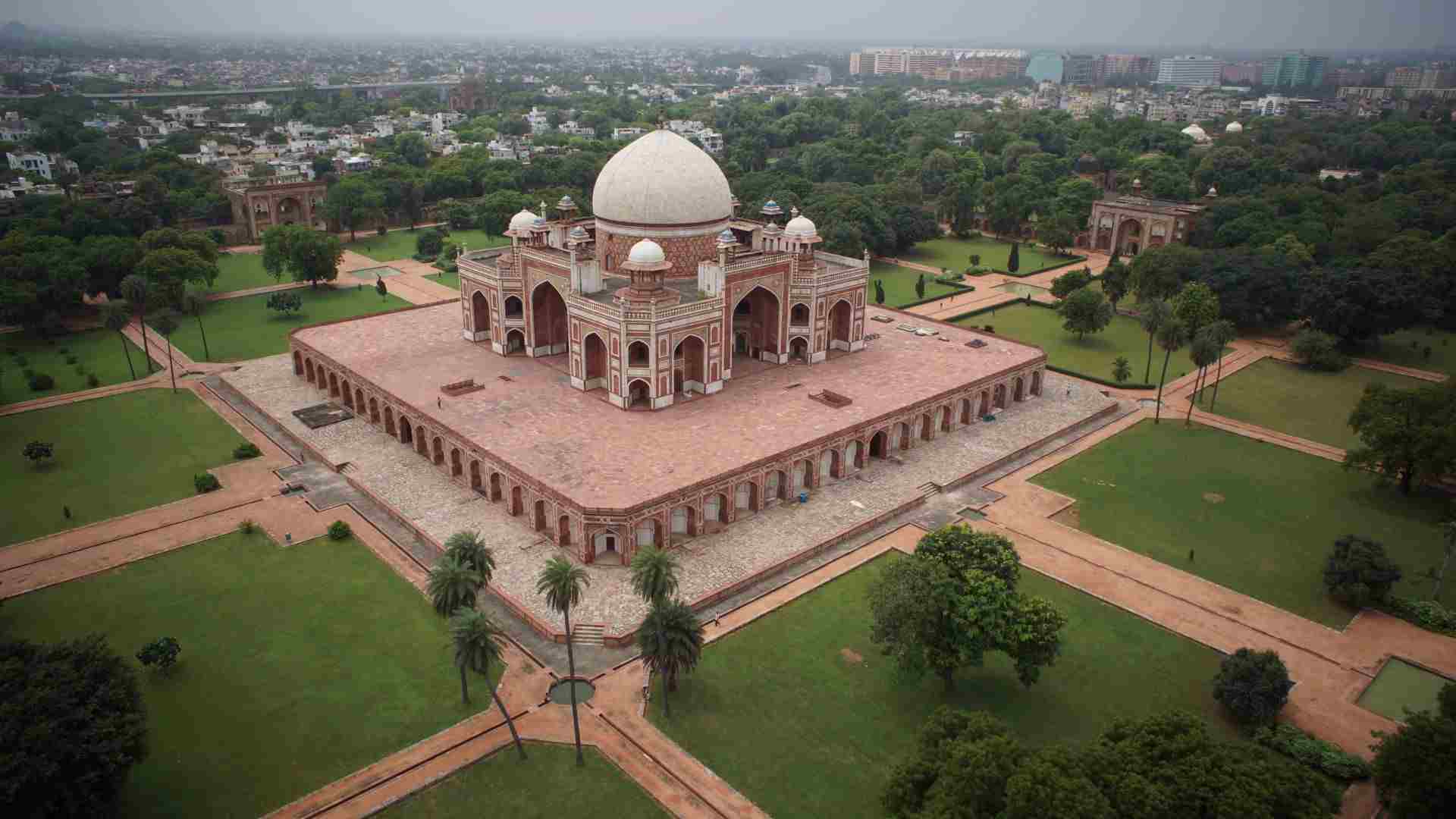
Stakeholders can choose to adopt from over 3,000 protected monuments from various parts of the country. These include monuments like Qutub Minar, Purana Qila, Uggar Sain’s Baoli, Humanyun’s Tomb, Upper Fort Aguada, Elephanta Caves, Agra Fort, Bhimbetka, Buddhist Stupa, Kailasanatha temple, Group of Temples Khajuraho, Safdarjung Tomb, Area between Jamali Kamali and Balban’s Tomb, Sun temple of Konark and Group of Monuments at Mamallapuram, among others.
‘This newly upgraded platform offers diverse functionalities, with each vertical of ASI meticulously navigable, and users can effortlessly explore various aspects of India’s rich cultural tapestry, from historical sites to educational resources,” reads an announcement made by the government.
PRASHAD scheme – The ‘Pilgrimage Rejuvenation and Spiritual Heritage Augmentation Drive’ (PRASHAD) scheme provides financial assistance to State Governments/Union Territory Administrations for infrastructure development at tourist destinations. The Ministry has sanctioned a total of 46 projects at a cost of Rs 1629.17 Crore. In addition, a total of 26 new sites have also been identified for development under PRASHAD Scheme. The State/UT wise details of the approved projects and sites identified for development under the Scheme are annexed. This information was given by Union Minister for Culture, Tourism and DoNER Shri G. Kishan Reddy in Rajya Sabha today.
Swadesh Darshan
The Ministry of Tourism launched its flagship scheme of ‘Swadesh Darshan’ in 2014-15. Under this, financial assistance was provided to the State Governments/ UTs Administration/Central Agencies for development of tourism infrastructure at various destinations. During the period 2014-15 to 2018-19, a total number of 76 projects were sanctioned under identified thematic circuits in 31 States/UTs of the country for Rs. 5292.57 Crore. The Ministry of Tourism later revamped its Swadesh Darshan scheme as SD2.0 with the objective to develop sustainable and responsible destinations.
Preservation of the Himalayan and Buddhist cultural heritage also holds a special place in the government’s efforts. The focus extends to the development of world-class infrastructure for the Buddhist circuit, thereby enhancing the spiritual experience for devotees. In 2021, the Kushinagar International Airport was inaugurated, facilitating easy access to the Mahaparinirvana Temple. The Ministry of Tourism is actively developing destinations under the Buddhist circuit in various states including Uttar Pradesh, Madhya Pradesh, Bihar, Gujarat, and Andhra Pradesh. In addition, the foundation stone for the technologically advanced India International Centre for Buddhist Culture and Heritage in Lumbini, Nepal, was laid in May 2022 by PM Narendra Modi, further highlighting the government’s commitment to the preservation and promotion of Buddhist heritage and India’s cultural diversity.
Uniform Civil Code (UCC)
The Uniform Civil Code proposes a common set of laws dealing with marriage, inheritance, adoption, and other personal matters and is not based on religion. It bans practices like polygamy, child marriage, ‘Iddat’ and ‘Halala’ and makes registration of marriages and live-in relationships mandatory. The Uniform Civil Code has stringent provisions for any violation of rules related to the registration of live-in relationships and it would be applicable to all Indian citizens irrespective of religion, tribe or other local customs.
The BJP Manifesto released ahead of the Lok Sabha Elections 2019 mentions, “Article 44 of the Constitution of India lists Uniform Civil Code as one of the Directive Principles of state policy. BJP believes that there cannot be gender equality till such time Bharat adopts a Uniform Civil Code, which protects the rights of all women, and the BJP reiterates its stand to draw a Uniform Civil Code, drawing upon the best traditions and harmonising them with the modern times.”
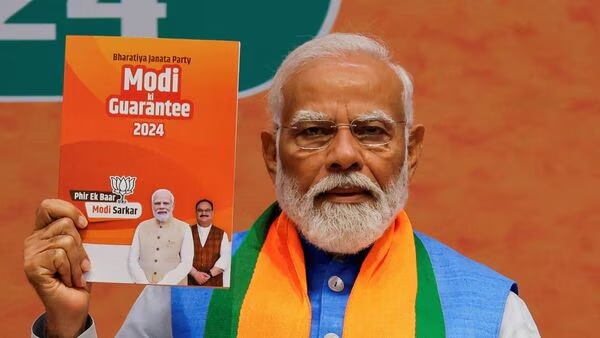
The same thing has been mentioned in the manifesto titled “Modi Ki Guarantee” which has been published ahead of the Lok Sabha Elections 2024. The manifesto promises to empower the four strong pillars of developed India — youth, women, poor and farmers.
Ahead of the 18th Lok Sabha, Bharatiya Janata Party (BJP), released its manifesto (Sankalp Patra) on 14th April. Among other promises, the party pledged to implement the Uniform Civil Code (UCC) if it returns to power after the upcoming Lok Sabha Elections.
“We will move forward with a resolve to realise the idea of One Nation, One Election. BJP also considers the Uniform Civil Code (UCC) equally necessary in the interest of the country,” Prime Minister Narendra Modi said during the launch of the manifesto.
Meanwhile, earlier this year, the BJP government in Uttarakhand enacted the Uniform Civil Code, which replaces religious personal laws that govern marriages, divorces, inheritance and other civil issues. Assam Chief Minister Himanta Biswa Sarma has also said that he will implement the Uniform Civil Code in order to ban polygamy in the state.
However, the Uniform Civil Code has been criticised for being non-secular in nature and have been vehemently opposed by opposition parties across the nation. Opposition leaders have also warned the government of potential law and order issues if the common law comes into effect in India.
Congress leader from Kerala V.D. Satheesan has said that UCC was being raked up in an election year to divide people along religious lines and reap electoral dividends.
“The Congress has no ambiguity regarding the Uniform Civil Code. Senior leader Jairam Ramesh had clearly stated the party’s stand as soon as this issue came back to the limelight. The Law Commission had said in 2018 that the UCC should not be implemented under any circumstances. The Congress also has the same position. The UCC is not practical as there are several tribes and communities within each religion, including Hinduism, with their own cultural background and traditions,” Satheesan told the media in July last year.
BJP’s Tamil Nadu ally AIADMK released its election manifesto stating that the Uniform Civil Code (UCC) could potentially harm the religious freedoms of minority communities in India.
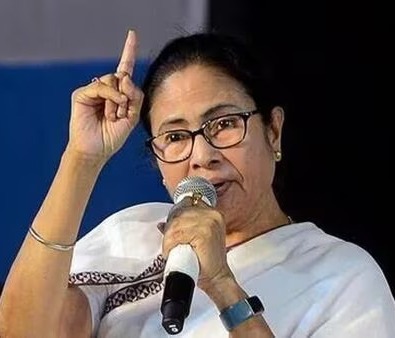
The Mamata Banerjee-led Trinamool Congress in their manifesto released this week has promised to revoke the Citizenship Amendment Act (CAA) and stop the implementation of a Uniform Civil Code (UCC) and National Register of Citizens (NRC) across the country. The manifesto is titled ‘Didi’s 10 sapaths’. West Bengal Chief Minister Mamata Banerjee and her party, the Trinamool Congress has always been vocal against the Citizenship Amendment Act. After the Central Government announced the implementation of the CAA in March this year, Mamata Banerjee had reacted saying she would oppose the Citizenship Amendment Act if it discriminates against people, highlighting that CAA and the NRC could be sensitive to West Bengal and the Northeast.
“We will not accept the Citizenship (Amendment) Act, National Register of Citizens (NRC) and Uniform Civil Code. We will not accept any forcible implementation of these. I do not know how to hate people. I do not deliver hate speeches. I want everybody to live like brothers, in peace and harmony. If we will live unitedly, nobody will be able to cause harm to us. Do not let anybody break this unity,” Mamata Banerjee recently said while addressing the gathering at Kolkata’s Red Road.
Shiv Sena (Uddhav Balasaheb Thackeray faction) leader Bhaskar Jadhav said that the ruling Bharatiya Janata Party intends to polarise votes. In Punjab, BJP’s old ally, Shiromani Akali Dal (SAD) has also expressed its concern over the UCC adverse impact on minority and tribal communities.
In the northeast, the Nationalist Democratic Progressive Party (NDPP) and National People’s Party (NPP), the dominant allies of the BJP in Nagaland and Meghalaya, have opposed the idea of UCC saying it is against the idea of India. Similarly, the Mizo National Front, an ally of the BJP from Mizoram has also said that the UCC was an attempt to terminate the religious or social practices, customary laws, cultures and traditions of the Mizos. Mizoram Pradesh Congress Committee (MPCC) also strongly opposed any move to implement the Uniform Civil Code (UCC) and appealed to the people of the state to collectively oppose it.
Meghalaya Chief Minister Conrad K Sangma, who is also the NPP’s national president, has raised concerns over the kind of impact the UCC can have on the three major communities of the state – Garo, Khasi, and Jaintia that are matrilineal.
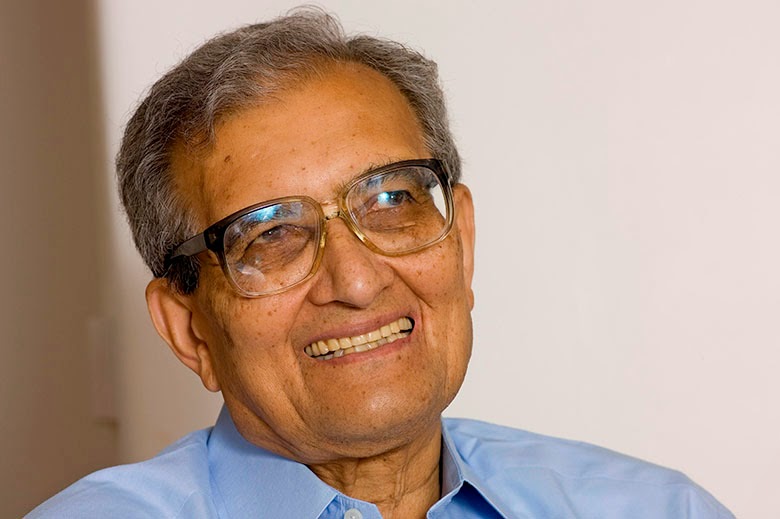
Not just politicians, Nobel Laureate Amartya Sen also expressed scepticism about the Central government’s desperation to implement the Uniform Civil Code (UCC). He said, “There is definitely some connection between the urgency to implement the UCC and paving the way for the far-fetched idea of Hindu Rashtra. Sen also questioned whether implementing the Uniform Civil Code would solve all the “differential problems” that plague the nation.
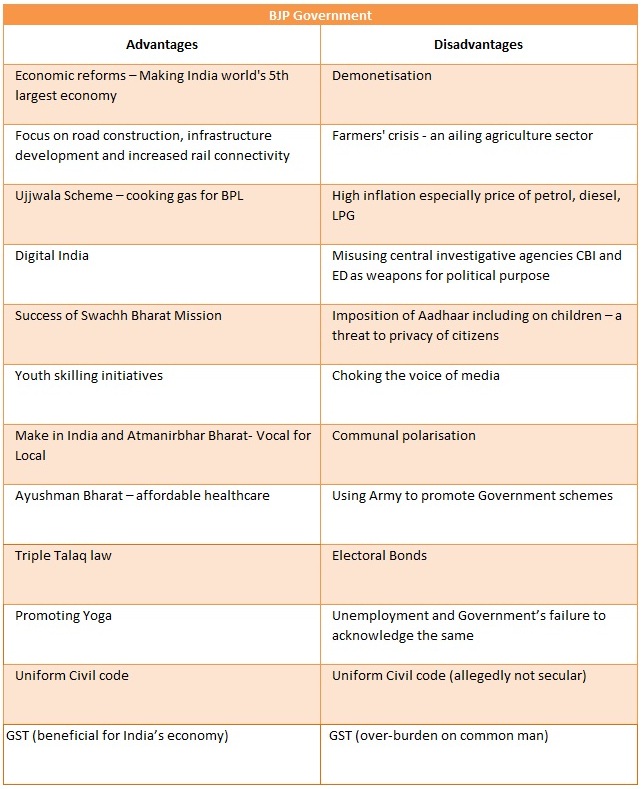
The CSR Journal

